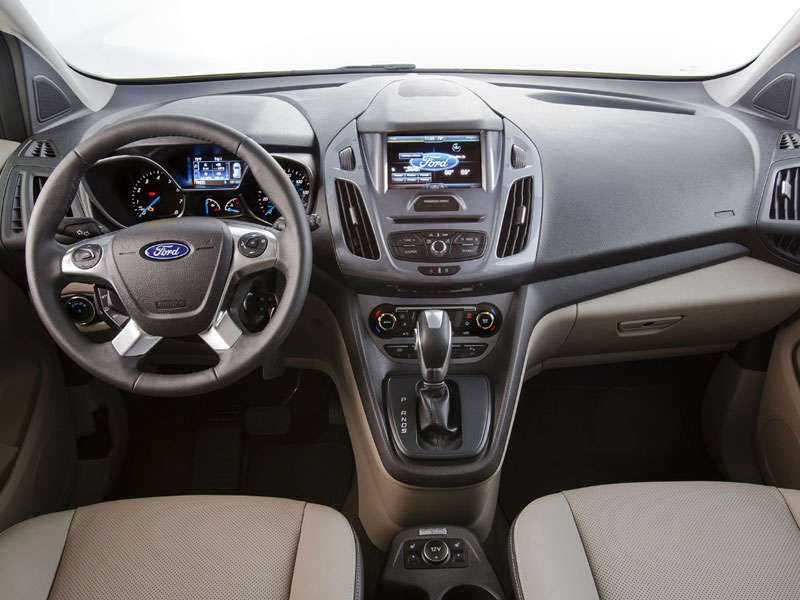Recent Articles
Popular Makes
Body Types
2015 Ford Transit Quick Spin Review
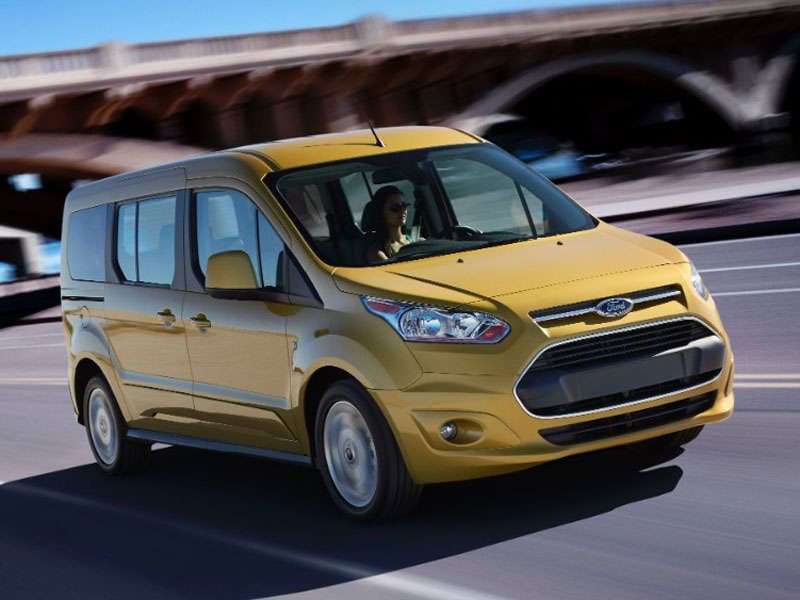
All-new for the 2015 model year, Ford’s Transit van with its unibody construction is poised to replace the traditional body on frame Ford E-Series full-size van in the blue oval’s lineup.
One of the new breed of unibody full-size vans, the truck-based origins have been cast aside in favor of this lighter more efficient configuration. While similar in concept to the tidy little Ford Transit Connect, the Ford Transit is far more spacious.
What’s more, the Transit is capable of handling heavier payloads, and towing larger trailers. As if all of that isn’t enough, the Transit is also far more versatile than the traditional E-Series van it will eventually replace.
Styling
Ford offers the Transit with three roof heights, three body lengths, and/or the capability of seating up to 15 people. A six-foot tall person can stand upright in the high-roof Transit, which makes using it as a workspace a wholly feasible proposition. Because it is so tall, the Transit also supports a higher seating position for the driver and front passenger, making it considerably more reassuring to operate.
In addition to the van configuration, Ford offers Transit in wagon, chassis cab and cutaway body styles. According to Ford, the Transit van features 81.5 inches of interior cargo height, enough for a person 6 feet, 4 inches tall to stand upright in the cargo area.
The medium-roof model can accommodate up to 72 inches of cargo height, while the low-roof model has almost 56 inches of cargo height. This enables it to handle significant payloads while being easy to outfit—and still be parked in a garage.
Maximum cargo capacity is 487.3 cubic feet and the rear doors swing in a 270-degree arc to make loading and unloading as easy as possible.
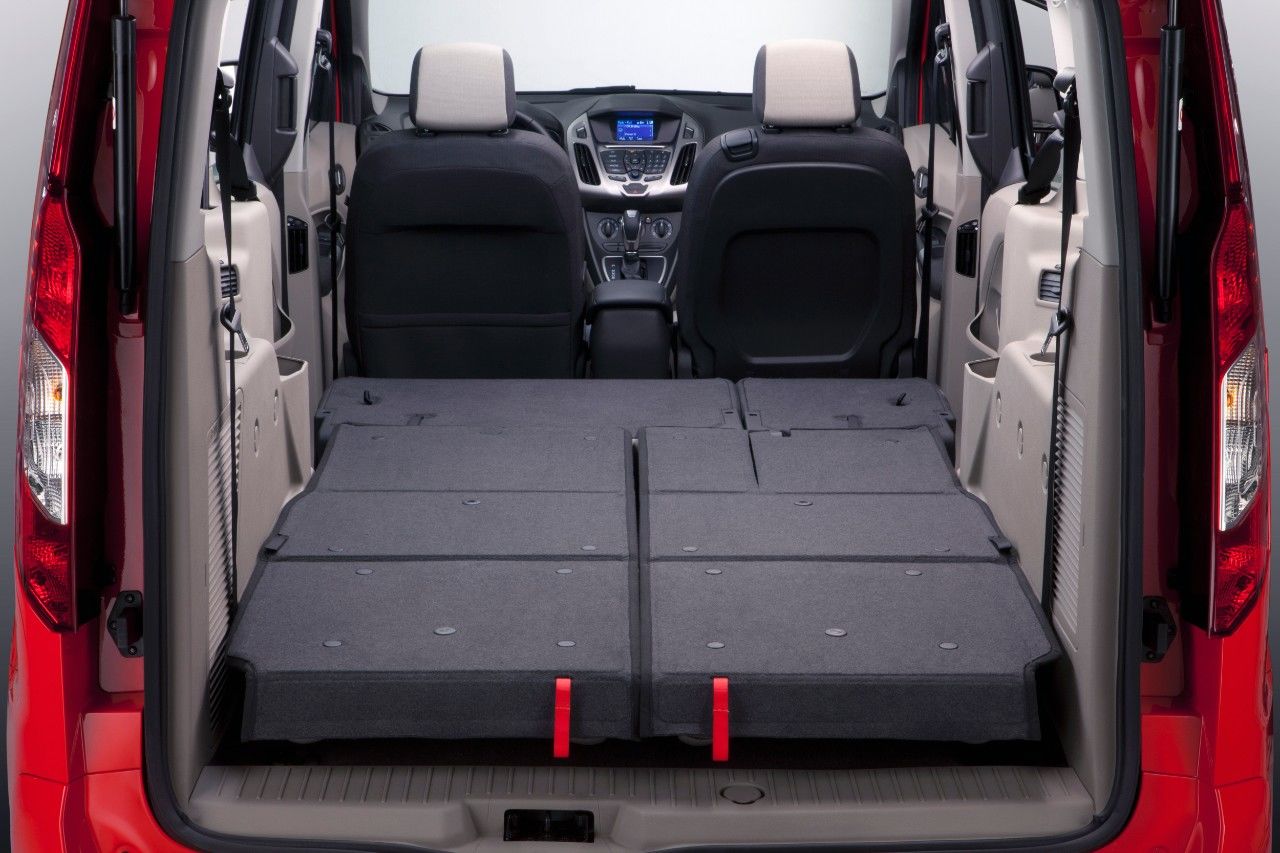
Performance
The base engine is a 3.7-liter V6 with 275 horsepower and 260 ft-lbs of torque. You can get the turbocharged 3.5-liter V6 with 365 horsepower and 400 ft-lbs of torque if you feel you need more power. Ford also offers a diesel option, consisting of a turbocharged 3.2-liter V6 good for 185 horsepower and 350 ft-lbs of torque.
A six-speed automatic transmission routes the engine’s output to the rear wheels, regardless of the engine choice. With this setup, both the 3.7-liter V6 and the 3.5-liter turbocharged V6 are said to return 16 miles per gallon combined, 14 in the city, and 19 on the highway. Transit can also be configured to run on propane or natural gas.
Transit is capable of towing up to 7,000 pounds, or carrying a payload of up to 4,650 pounds.
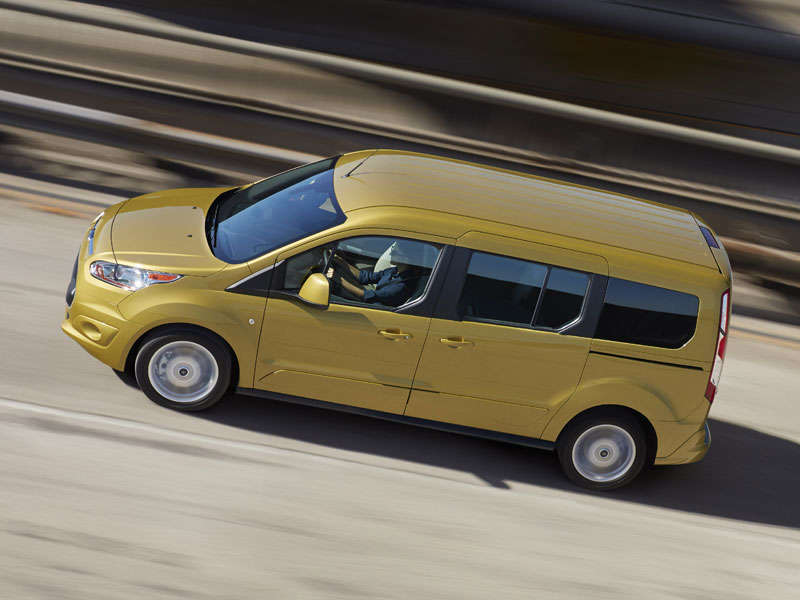
Safety
Safety features include stability control, front airbags, side airbags, and three-point safety belts for all seating positions. Transit also features side intrusion door beams, tire pressure monitoring, rollover prevention, and ABS.
Optional safety kit includes a rearview camera, a rear parking sensor array, and lane departure warning.
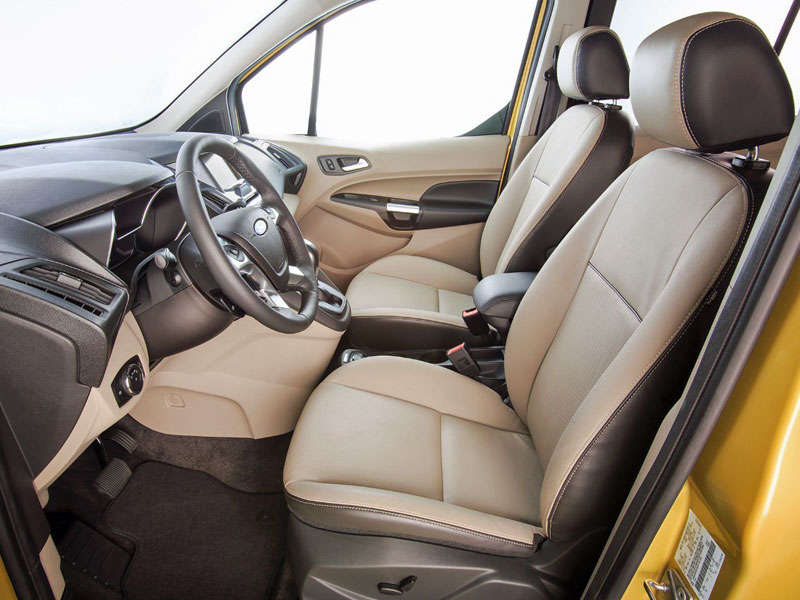
Pricing & Features
Pricing starts at $29,735. Standard features include full power accessories and air conditioning, a hinged passenger side rear door, cargo tie downs, and a tilt and telescoping steering wheel.
Options include long-arm exterior rear view mirrors, dual sliding rear cargo doors, cruise control, a rear parking sensor array, remote start, rear air conditioning, LED cargo area lighting, a rearview camera, a spray-in bed liner for the cargo compartment, full carpeting, rain sensing wipers, a heavy-duty trailering rig, and Ford’s Sync voice activated interface.
The MyFordTouch interface is also offered with a six-inch touchscreen.
Configurations include a long wheelbase chassis with an extended length body; low, medium, and high roofs; and a variety of gross vehicle weight ratings—labeled Transit 150, 250, and 350.
